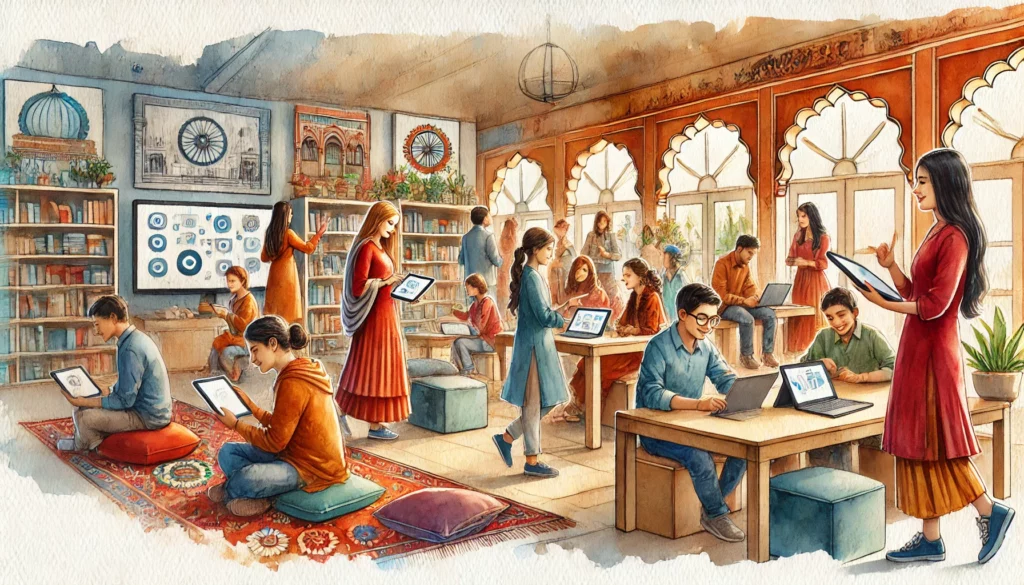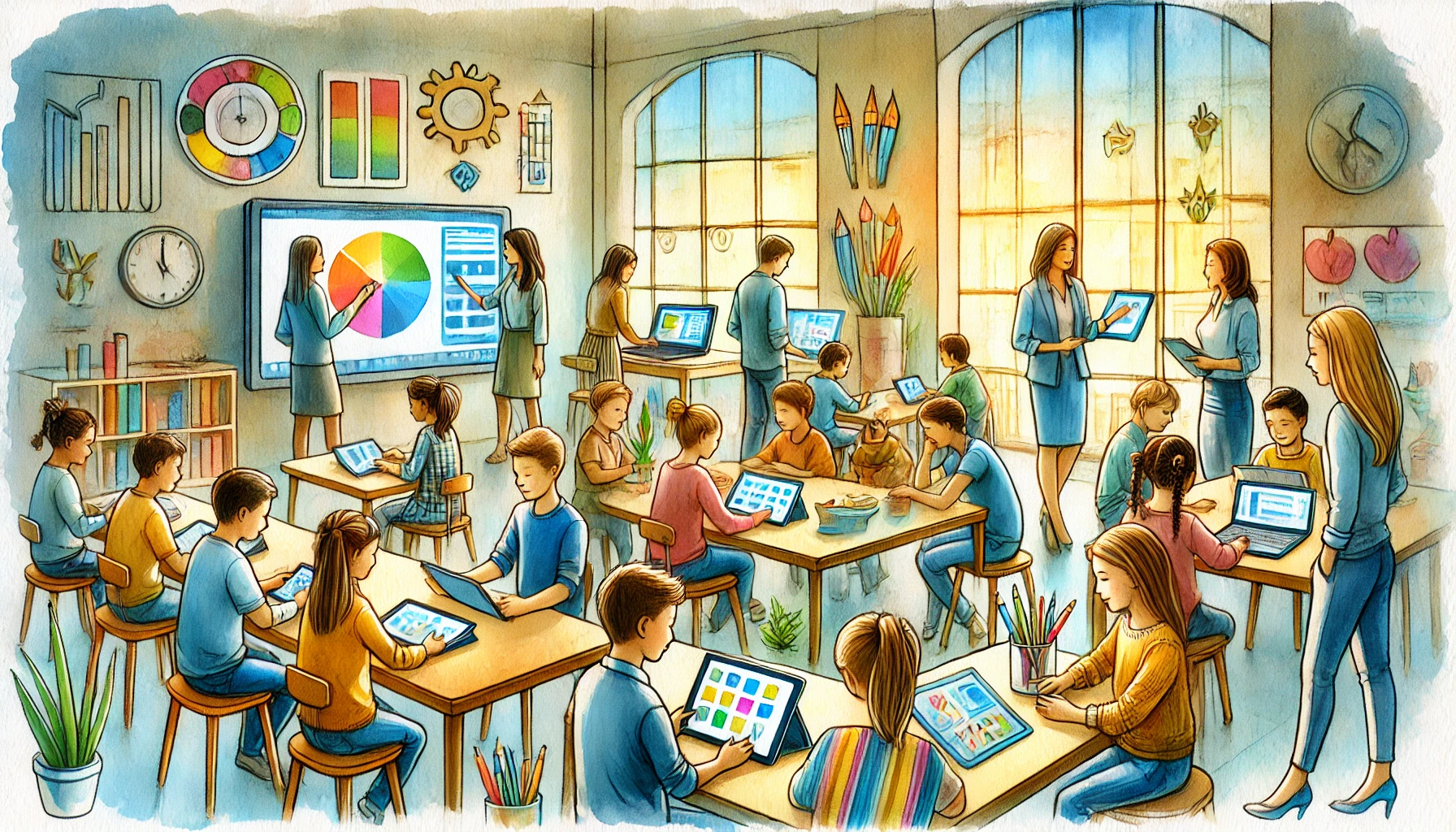In recent years, technology has reshaped the way we approach education, creating boundless opportunities for students, educators, and lifelong learners. With innovative tools and platforms, it’s easier than ever to enhance the learning experience, access quality resources, and develop new skills. This article explores some of the most impactful ways technology is revolutionizing education, providing readers with actionable tips and insights for integrating tech into their own educational journeys.
Table of Contents
Embracing Interactive Learning Platforms
One of the standout benefits of technology in education is the advent of interactive learning platforms that make studying engaging and personalized. From platforms like Khan Academy to Coursera, students have the freedom to learn at their own pace and explore subjects tailored to their interests. Interactive features such as quizzes, gamified tasks, and real-time progress tracking boost motivation and help students retain information better.
Benefits of Interactive Platforms
- Self-Paced Learning: Allow students to learn at their own speed, ensuring a solid understanding before moving on to the next topic.
- Instant Feedback: Quizzes and assignments provide immediate feedback, allowing students to identify areas for improvement quickly.
- Customized Pathways: Many platforms offer customized learning pathways based on individual skills and interests.
“Technology can become the wings that will allow the educational world to fly farther and faster than ever before—if we will allow it.” – Jenny Arledge
Integrating Virtual Reality (VR) and Augmented Reality (AR) in the Classroom
Virtual Reality (VR) and Augmented Reality (AR) are making waves in classrooms worldwide. These immersive tools allow students to experience subjects in a whole new way, from walking through historical landmarks to exploring the depths of the ocean. VR and AR provide hands-on learning experiences that boost engagement and comprehension, particularly in fields like science, history, and geography.
How to Use VR/AR for Enhanced Learning
- Field Trips Without Leaving the Classroom: VR simulations offer virtual field trips, making it possible to explore places like ancient Rome or the solar system.
- Interactive Labs: Science students can conduct virtual experiments without the risk and cost of traditional labs.
- Language and Communication Practice: Language learners can interact with virtual environments that encourage them to practice vocabulary and conversations.
“In learning you will teach, and in teaching you will learn.” – Phil Collins
Digital Collaboration Tools for Team-Based Learning
Collaborative learning is crucial in developing teamwork, problem-solving, and communication skills. Today’s digital collaboration tools—such as Google Workspace, Trello, and Padlet—enable students to work together on projects, share insights, and receive real-time feedback, no matter where they are. Educators can foster a sense of community and engagement by organizing group activities and encouraging collaborative problem-solving.
Enhancing Team-Based Learning with Technology
- Shared Workspaces: Tools like Google Docs allow students to work together on a single document, with each student contributing and editing in real-time.
- Project Management: Platforms like Trello help students organize tasks and responsibilities, ensuring everyone stays on track.
- Creative Presentations: Collaborative tools allow students to create visually engaging presentations, fostering creativity and clarity in communication.

Building Strong Reading Habits with E-Books and Audiobooks
Technology has revolutionized reading by making books accessible in digital formats, including e-books and audiobooks. This flexibility allows students to engage with materials on their preferred devices, in multiple languages, and in accessible formats. Reading apps like Kindle, Audible, and Libby enable students to build reading habits in a convenient, enjoyable way, helping improve comprehension and vocabulary.
“The best way to predict the future is to create it.” – Peter Drucker
Using Artificial Intelligence (AI) for Personalized Learning
Artificial Intelligence is transforming personalized learning, providing insights that help educators understand individual students’ strengths and weaknesses. AI-powered apps and learning platforms use data-driven methods to adapt lessons, resources, and feedback based on each student’s performance, creating a more personalized learning experience.
Leveraging AI for Individualized Education
- Custom Learning Plans: AI can design learning paths based on a student’s strengths, weaknesses, and preferences.
- Automated Tutoring: AI-driven tutoring apps can help with subjects like math, providing explanations and extra practice as needed.
- Progress Monitoring: AI can track performance and adjust difficulty levels, keeping students on an achievable yet challenging path.
Exploring Online Courses for Broadened Learning Opportunities
Online courses have democratized education, allowing students worldwide to access lectures, course materials, and assessments from top universities and experts. Platforms like Coursera, Udemy, and edX make it possible to study diverse subjects, from data science to literature, providing certifications that can bolster one’s academic or professional profile.
Tips for Maximizing Online Learning
- Create a Schedule: Stick to a schedule to complete courses at a manageable pace.
- Engage with Discussion Forums: Participate in course forums to deepen understanding and network with fellow learners.
- Set Clear Goals: Define what you hope to achieve by completing each course, which will help you stay motivated and focused.
Quotes to Inspire Learning Through Technology
Here are some powerful quotes to fuel your journey with technology in education:
- “Technology is best when it brings people together.” – Matt Mullenweg
- “Education is the most powerful weapon which you can use to change the world.” – Nelson Mandela
- “The beautiful thing about learning is nobody can take it away from you.” – B.B. King
- “The only limit to our realization of tomorrow will be our doubts of today.” – Franklin D. Roosevelt
- “Learning never exhausts the mind.” – Leonardo da Vinci
Fostering Digital Literacy for Future Success
In a world where technology is ever-evolving, digital literacy has become a crucial skill for students. Digital literacy enables individuals to critically assess information, identify reliable sources, and communicate effectively in online spaces. From learning cybersecurity basics to understanding digital ethics, building digital literacy equips students with essential skills for both their educational and professional lives.
Balancing Screen Time for Optimal Learning
While technology offers many benefits, it’s important to manage screen time to prevent burnout and encourage balanced learning habits. Incorporating breaks, eye exercises, and off-screen study activities can ensure students remain engaged and healthy.
Final Thoughts on Using Technology in Education
By leveraging the tools and strategies discussed, students and educators can create a dynamic, personalized, and highly effective learning experience. Technology is a powerful ally in the journey of education, opening doors to opportunities previously unimaginable. Embrace these advancements, adapt them to your own learning style, and enjoy the limitless possibilities that technology offers.
References
- Khan Academy: Free resources across various subjects with interactive learning.
- Coursera: Offers online courses and degrees from world-class universities.
- ISTE: International Society for Technology in Education, offering standards and resources on integrating technology in classrooms.
https://www.iste.org - Edutopia – Technology Integration
- Common Sense Education – Technology Tools for Teachers

